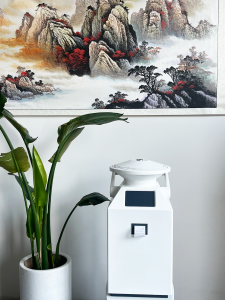A hospital is a sanctuary, a sacred place where illness can be healed and pain can be alleviated. It opens its doors and welcomes a steady stream of patients. What we cannot see are the bacteria carried by these patients, which are like hidden enemies. Without effective protective measures, the hospital may become a breeding ground for bacteria.
"Nosocomial infection", this epidemiological keyword, has attracted increasing attention. The respiratory tract, body surface, secretions and excreta are all breeding grounds for pathogens. They spread quietly in every corner of the hospital, threatening the life safety of every medical worker and patient. Especially for those patients who are weak and have low immunity, the risk of this infection is self-evident. Coupled with the increasing drug resistance of pathogens, the problem of "hospital infections" has become increasingly serious.

In order to protect this oasis of life, decisive measures must be taken to cut off the chain of infection. Isolating infected persons and conducting comprehensive disinfection of items, medical equipment, floors and air that may come into contact are particularly critical. Air disinfection, in particular, is an essential disinfection method in operating rooms, burn wards, infectious disease areas, and other places. It is also a key means to block the spread of respiratory viruses. Respiratory infectious diseases spread quickly and cover a wide range of areas. Effective air disinfection is crucial to reducing nosocomial infections.
The significance of air disinfection is not limited to hospitals. In the home environment, fresh air can reduce the burden on people's immune systems and improve work efficiency and quality of life. In factories, air disinfection can ensure the quality and safety of food, cosmetics, pharmaceuticals and other products and prevent bacterial contamination.
The reality is that air quality in most hospitals around the world is poor. Despite clear disinfection standards and microbial contamination requirements, air quality in many hospitals still does not meet standards. This not only threatens the life safety of patients, but also affects the physical and mental health of medical workers. Therefore, we must strengthen the research and application of air disinfection measures to create a safer and cleaner environment for hospitals.

Currently, commonly used air disinfection methods in hospitals include the use of air fresheners, negative ion generators, and ultraviolet sterilization. Each of these methods has advantages and disadvantages and needs to be selected and applied according to the actual situation. For example, although the cost of air fresheners is low, their bacterial removal rate is not high; although negative ion generators can inhibit the growth of bacteria and viruses, their sterilization rate is low; although ultraviolet sterilization is effective, excessive ultraviolet irradiation However, it will cause harm to the human body, and it is not suitable to have personnel on site for ultraviolet disinfection.
In contrast, atomized hydrogen peroxide disinfection shows obvious advantages. Atomized hydrogen peroxide disinfection can complete the disinfection of the air and the surface of equipment and facilities, ensure the concentration and time of the disinfectant during the disinfection process, and also has a good killing effect on various bacteria, spores, etc., and after disinfection, gas peroxidation Hydrogen will decompose into water and oxygen, no secondary pollution, no residue, and excellent compatibility with materials. Therefore, it can become the main disinfection method to effectively curb nosocomial infections.
Features of hydrogen peroxide compound factor disinfection machine
1) Nanoscale atomized particles, no residue, good sterilization effect, low cost of use, and good material compatibility;
2) Safe and harmless, certified by multiple authoritative organizations, with complete verification information;
3) Space sterilization efficiency is high, easy to operate, and digital disinfection;
4) Multi-functional configuration options, suitable for different scenarios, no harm to the human body;
5) The combination of active and passive disinfection methods is suitable for various complex situations.

In the future, we have reason to believe that atomized hydrogen peroxide disinfection technology will play an important role in the medical field and life, making greater contributions to ensuring human health and safety.